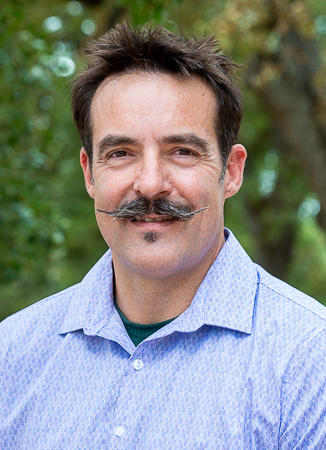Vice President, Principal Scientist
B.S. Fisheries Biology; M.S. Aquatic Ecology
Phone: (530) 240-6448
Auburn, California

Vice President, Principal Scientist
B.S. Fisheries Biology; M.S. Aquatic Ecology
Phone: (530) 240-6448
Auburn, California
Brad has more than 23 years of experience working on anadromous and estuarine fishery issues in California and has attained expert knowledge of regulated rivers and estuaries, particularly related to the ecology of Chinook Salmon and other anadromous fishes. Brad excels in high-level data analysis including life-cycle modeling and simulation modeling of management impacts and the development, application, and evaluation of quantitative models for assessing aquatic habitats and fish population dynamics. Brad previously served as an environmental scientist with the California Department of Water Resources and was the lead scientist for hydropower re-licensing.
Selected Publications
Abadia-Cardoso, A., A. Brodsky, B. Cavallo, M. Arciniega, J. J. Garza, J. Hannon, and D. Pearse. 2019. Anadromy redux? Genetic analysis of Upper American River rainbow trout Oncorhynchus mykiss to inform development of an indigenous steelhead broodstock for Nimbus Hatchery. North American Journal of Fisheries Management. In final review.
Lessard, J., B. Cavallo, P. Anders, T. Sommer, B. Schreier, D. Gille, A. Schreier, A. Finger, T. C. Hung, J. Hobbs, and B. May. 2018. Considerations for the use of captive-reared delta smelt for species recovery and research. San Francisco Estuary and Watershed Science 16(3).
Cavallo, B., et al. 2016. Coleman National Fish Hatchery Adaptive Management Plan. Report to the U.S. Department of the Interior, Bureau of Reclamation, Manton, California.
Cavallo, B., P. Gaskill, J. Melgo, and S. C. Zeug. 2015. Predicting juvenile Chinook routing in riverine and tidal channels of a freshwater estuary. Environmental Biology of Fishes 98(6):1571-1582.
Delaney, D., P. Bergman, B. Cavallo, and J. Melgo. 2014. Stipulation study: steelhead movement and survival in the South Delta with adaptive management of Old and Middle River flows. Technical Report to the California Department of Water Resources, Sacramento, California.
Zeug, S. C., and B. J. Cavallo. 2014. Controls on the entrainment of juvenile Chinook salmon (Oncorhynchus tshawytscha) into large water diversions and estimates of population-level loss. PLoS One 9(7):e101479. DOI:10.1371/journal.pone.0101479.
Cavallo, B., J. Merz, and J. Setka. 2013. Effects of predator and flow manipulation on Chinook salmon (Oncorhynchus tshawytscha) survival in an imperiled estuary. Environmental Biology of Fishes 96(2-3):393-403.
Merz, J., M. Workman, D. Threloff, and B. Cavallo. 2013. Salmon life cycle considerations to guide stream management: examples from California’s Central Valley. San Francisco Estuary and Watershed Science 11(2).
Zeug, S. C., and B. J. Cavallo. 2013. Influence of estuary conditions on the recovery rate of coded wire tagged Chinook salmon (Oncorhynchus tshawytscha) in an ocean fishery. Ecology of Freshwater Fish 22:157-168.
Merz, J., S. Hamilton, P. Bergman, and B. Cavallo. 2012. Spatial perspective for delta smelt: a summary of survey data. California Fish and Game 97(4):164-189.
Cavallo B., R. Brown, and D. Lee. 2009. Hatchery and genetic management plan for Feather River hatchery spring-run Chinook program. Report to the California Department of Water Resources, Sacramento, California.
Seesholtz, A., B. Cavallo, J. Kindopp, and R. Kurth. 2004. Juvenile fishes of the lower Feather River: distribution, emigration patterns, and associations with environmental variables. Pages 141–166 in F. Feyrer, L. R. Brown, R. L. Brown, and J. J. Orsi, editors. Early Life History of Fishes in the San Francisco Estuary and Watershed. American Fisheries Society, Symposium 39, Bethesda, Maryland.